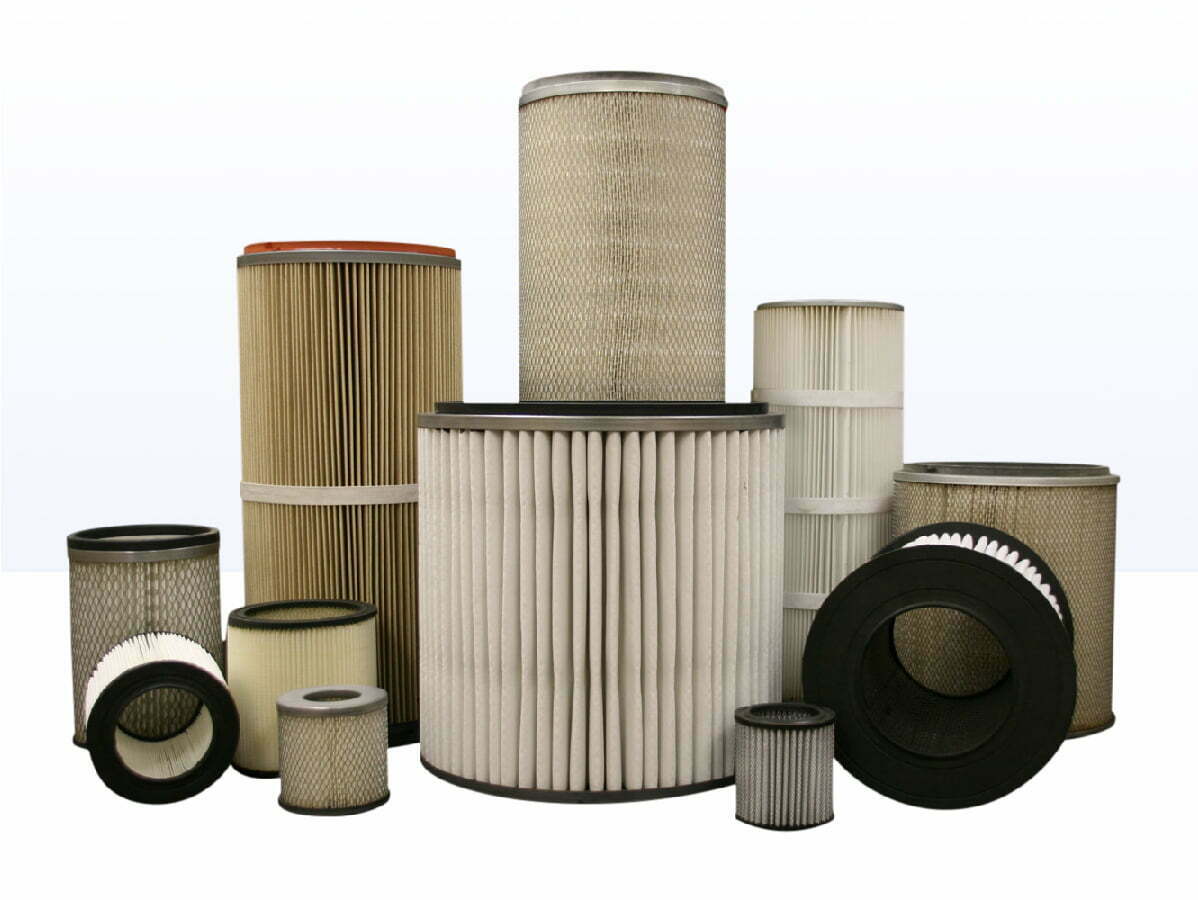In order to keep the air within your facility free of dust and other contaminants, it is essential to have a dust collection system that is in top working order. When a dust collector isn’t operating as it should, there is a risk to your employees, your equipment, and even to the facility itself. From low-quality dust collector filter cartridges to poorly designed vents, it is important to familiarize yourself with the warning signs that your dust collector needs maintenance.
Worn or Dirty Filters
In order for a dust collector to run efficiently, it is important to regularly maintain the filters. Filters that are caked in layers of debris are ineffective for many reasons. Firstly, clogged filters do not allow air to flow through them, meaning that contaminants are being released back into the air and your equipment. Not only does this increase the risk of fire in your facility, but it can affect the health of your employees as they breath the dusty air. It is important to regularly check your filters in order to ensure that there is no build-up of debris or structural damage. On top of that, it is essential to set up a regular cleaning schedule, and when your filters have reached the end of their productive life, have them replaced with high-quality new ones. Always keep in mind that preventative maintenance is best!
Hoppers Filled with Dust
Dust collector hoppers are intended for temporary storage of debris only. If debris accumulates inside the hopper, serious hazards can arise. Filter and machine damage, or even worse, fire leading to an explosion are some of the possible outcomes of a blocked hopper. During times of high production, there can be surges of dust that clog the hopper. This is especially true when working with fibrous dust, such as wood. Wood fibers can bind together creating a build-up that can quickly lead to a blockage. Dust collectors with self-dumping hoppers provide a safe way to ensure dust buildup is kept to a minimum. However, if your dust collector is not equipped with this feature, regular inspection and emptying of the hopper is vital.
Poorly Designed Vents
If combustible dust is a by-product of manufacturing in your facility, your dust collector should have protection against deflagration. Deflagration results in rapidly burning fires that can be difficult to control and highly destructive. Vents can be installed in order to protect against deflagration, however, they need to be properly designed and maintained. As with many other aspects of your dust collection system, if the vents are not kept clear of debris and buildup, a fire hazard can occur. Regular cleaning of the vents and training on your dust collector’s pressure limits is a step in the right direction to keeping your workers and facility free from life-threatening hazards.
Ductwork Without Protection
As with both the hopper and vents, it is important to inspect and maintain the ductwork connected to your dust collector. Buildup can occur in all of the areas attached to, and surrounding, your dust collector. Not only does buildup increase the risk of a fire, but it can create blowback into your machinery. Blowback can damage the filtration system and lead to unnecessary shutdowns. To lower the risk of this kind of damage, the ductwork should have properly installed and maintained valves and dampers. If a fire were to occur, these features can prevent flames and smoke from entering ductwork and help limit overall damage.
Find High-Quality Dust Collector Filter Cartridges
Whether you’re looking to have your dust collector filter cartridges cleaned or replaced, Robinson’s Filter Solutions can help. We offer high-quality cartridges that help ensure you have a dust collector that’s operating as safely as possible. As well, we can conduct an on-site efficiency audit to help pinpoint areas where your company can use more preventative maintenance. Please contact Robinson’s Filter Solutions for more information.

